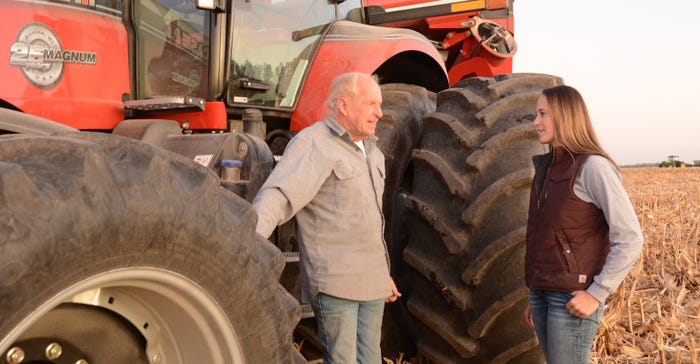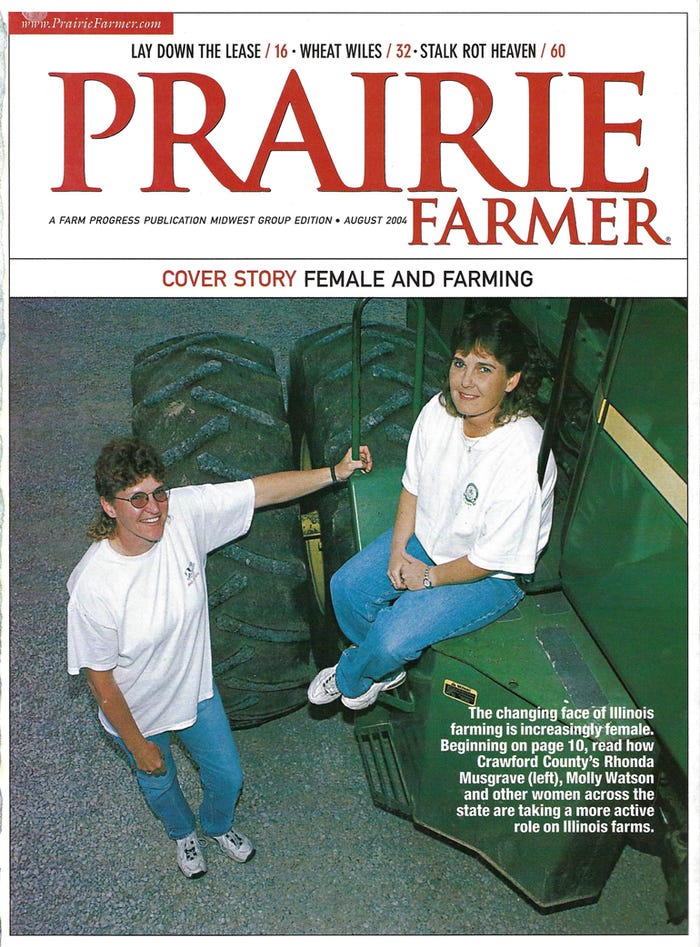
Bridjet Blout was barely two weeks out of college when a salesman came to the farm and, in the course of conversation, asked a big question: “So, you just working on the farm til you find a real job?”
She laughs — now. “I said, ‘No. This is my real job.’ I couldn’t believe he just said that!”
Blout is part of a growing number of young women choosing production agriculture as a career. USDA says the number of female producers increased by 27% from 2012 to 2017, to 1.2 million female farmers working 388 million acres and racking up $148 billion in sales. Granted, USDA revised its census questions in 2017 to better capture that demographic, which likely resulted in higher numbers. Still, anecdotally, farmers, agribusinesses and Illinois FBFM report a moderate but significant shift in women doing the work and making the decisions on Illinois farms.
Blout is a prime example. She left for college in 2011 with her sights set on becoming a dentist. Before long, she missed the farm — enough so that she wanted to be part of it. It was a short conversation when she called home (her parents: “Yes!”), so she switched to a finance degree that day, graduated in 2015 and reported for work on her family’s Prairie City, Ill., farm. She spent her first day on the job power-washing the soil finisher.
Today, she farms full time with parents Aaron and Julie Blout and grandparents Armin and Jan Blout. She’s built equity by buying 40 acres with a Farm Service Agency loan for young and beginning farmers, and she rents ground from a farmer who loves to tell his Florida friends he’s renting his ground to a 27-year-old woman farmer.

For Blout, it’s another day on the job she loves. She learned seed selection and ordering from her mom, and chemicals from her dad. She sprays, works ground and runs a combine all fall. And she’s found a local network of women in ag that meets for the occasional power lunch. Sales folks have learned to meet with her.
Why the change?
Rhonda Musgrave has an idea or two about what’s driving daughters to return to the farm. Musgrave farms near Oblong, Ill., and she graced the Prairie Farmer cover back in 2004, when the magazine told her story as the principal operator of 1,500 acres of corn and soybeans. She sees two drivers making farming a more feasible option for young women.
First, technology: Farming isn’t as physically labor intensive as it used to be. You don’t have to lug 50- and 60-pound seed bags to load the planter. Plus, fewer farmers are overhauling equipment in the shed all winter.
“Thirty years ago, I helped my dad overhaul three tractors. But they didn’t have all this electronic stuff then. Now, changing oil and filters is about all you can do,” she points out.
Second, generations are changing. Musgrave says the folks she deals with on a daily basis are a different generation than they were when she started 30 years ago. “The young generation is more accepting, and they grew up used to Mom working outside the home, regardless of what they do,” she says.
That means parts runs are a whole lot different today.
“I can remember going to the local implement dealer to get parts,” Musgrave says. “What you call it and what they call it are two completely different things. I wanted to see that picture he’s looking at on the monitor so we can make sure it’s the same thing. The older guys would act like that screen was a big secret. Now I can go online, find what I want, get the part number, call the dealership and say, ‘Here’s the part number. Do you have it?’”

Musgrave offers recommendations born of time and experience: Develop confidence. Act like you know what you’re talking about.
And if you want to farm? Not all parents are as gung-ho as the Blouts.
Musgrave says to ask how you can come back. Tell them you want to and that you can do the work, and then show them you can.
“You’ve got to prove yourself,” she says — something that hasn’t entirely changed. “There’s some old saying about women having to work twice as hard to be considered half as good as a man, and unfortunately, there are still cases where it’s like that.” But, she acknowledges, it may be the same way for young men starting out on the farm.

Blout knows the work ethic, and with six harvests under her belt, she still loves it — especially working with her family. Her parents are active farm partners, and she grew up watching her mom run tractors and combines, track financials, and help make business decisions. She’s building her own equipment line these days, slowly but surely building equity in the operation. And she’s fortunate to have a family with a sizable operation that could make room for her.
She’s also thinking about the future. How she might be able to handle everything when her parents are able to retire. It’s a daunting task given how well they work together.

And short of that one salesman, Blout has only encountered helpful people in the community, including fertilizer and seed dealers who take time to explain and answer questions.
She questions whether it’s a changing society that’s become more accepting of women farmers, or whether her family’s support has made her experience more friendly. Or maybe both.
“My parents were both supportive, and I never felt like it was a hard decision for me to come back and farm,” Blout says.
As it turns out, her “real job” has been just right — right on the farm.
For more on this series:
Women farm their own way
Women: Picture a future on the farm
We are all passionate about agriculture
About the Author(s)
You May Also Like






